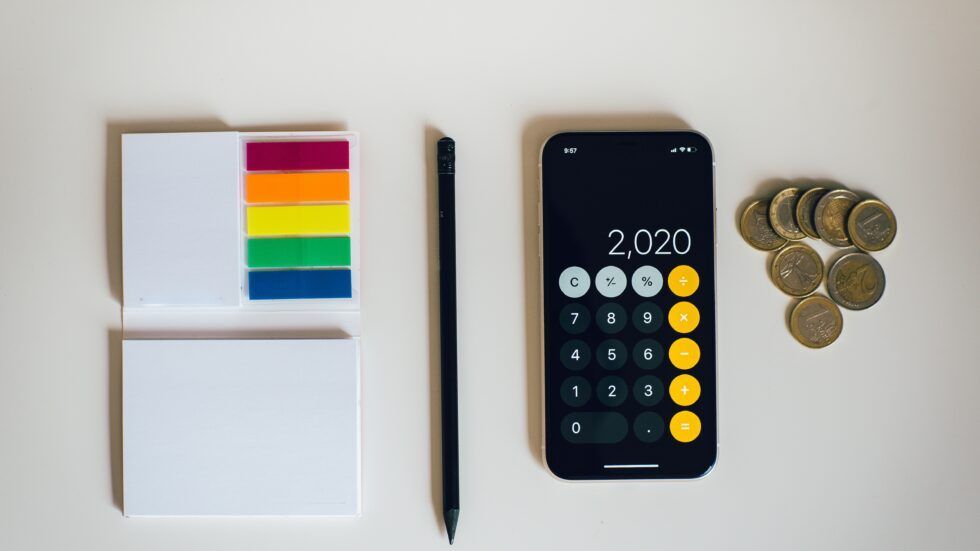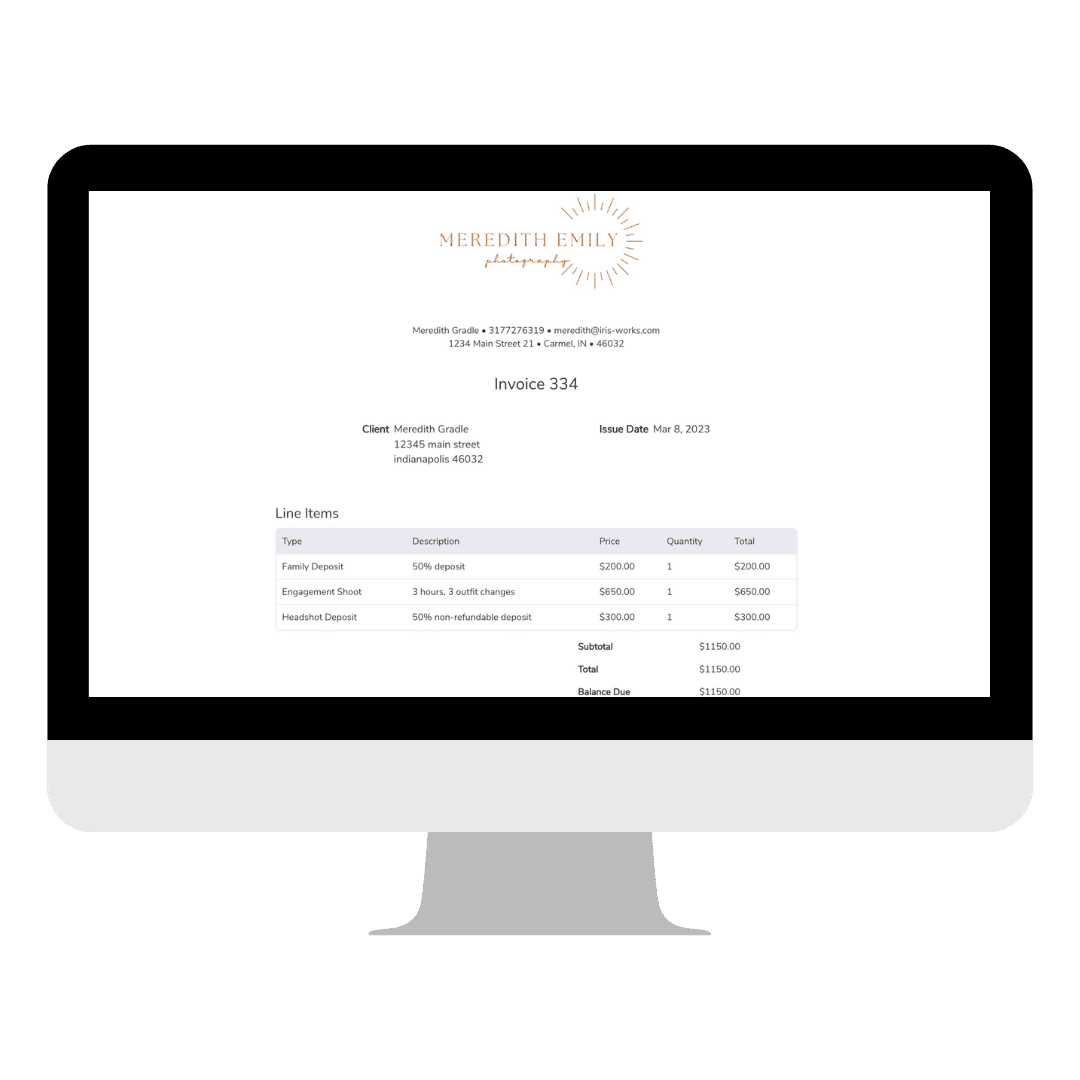
As a photographer, invoicing clients for your services is an essential part of running a successful photography business. However, pricing your services and calculating taxes can be a daunting task. In this informative blog post, we will guide you through the process of invoicing for photographers, including tips on effective invoicing techniques to ensure that you get paid promptly and accurately. With our expert advice on understanding invoicing for photographers, pricing your photography services, calculating taxes efficiently and effectively managing invoices with clients – you’ll have all the tools needed to run a thriving photography business! Want a guide on invoicing for photographers? Check out this blog.
Understanding Invoicing for Photographers
When creating an invoice as a photographer, it’s important to include the necessary details such as your service description, payment terms and due date. Using a professional template can help streamline this process and ensure accuracy in calculations. Additionally, understanding how taxes should be calculated on your services is crucial for pricing your work correctly.
Using a professional template can streamline invoicing and ensure accuracy for photographers.
Communication with clients regarding invoicing is also key to avoiding misunderstandings or unpaid invoices. Clearly outlining your payment policies and expectations upfront can prevent issues down the line. By following these tips, you can create clear and effective invoices as a photographer while ensuring you are compensated fairly for your services.
What is Invoicing?
Invoicing refers to the process of creating and sending a formal document that outlines the details of goods or services sold. It includes information such as pricing, quantity, date of sale, payment terms and methods. Invoicing is an essential part of any business transaction as it serves as proof of purchase for both the seller and buyer.
In contrast to a receipt which acknowledges payment has been received by the seller, an invoice acts as a request for payment from clients. Creating professional invoices using templates can give photographers a more structured approach in billing their clients while keeping track of pending payments efficiently. Failing to issue accurate invoices can result in delayed payments or legal disputes with clients – highlighting how important invoicing is in maintaining good business relationships with customers while safeguarding your financial interests at all times.
Why is Invoicing Important for Photographers?
As a photographer, invoicing is crucial for several reasons. Firstly, it helps track your income and expenses accurately. By creating invoices and keeping them organized in one place, you can easily monitor your finances and determine the profitability of your photography services. Secondly, sending professional-looking invoices to clients showcases your attention to detail and adds an element of professionalism to your communication with them.
Moreover, creating detailed invoices provides legal protection for payment disputes that may arise in the future. The invoice should include all relevant information like service description or itemized pricing so that there is no confusion about what was agreed upon by both parties. Using a template for your invoices ensures consistency across all transactions with clients while also saving time on administrative tasks. Overall, invoicing makes financial management more efficient and offers essential legal safeguards for photographers’ businesses.
Different Types of Invoices for Photographers
When it comes to invoicing for photographers, there are three main types: hourly rate invoices, project-based invoices, and retainer-based invoices. Hourly rate invoices charge the client based on the number of hours worked on a particular job. Project-based invoices provide a fixed rate for an entire project or set of deliverables. Retainer-based invoices require the client to pay upfront for a certain amount of service each month.
To create these different types of invoices, photographers can use templates or customize them to fit their specific needs and services offered. It’s important to communicate clearly with clients about payment terms and expectations before beginning any work to avoid misunderstandings down the line.
Ultimately, choosing the right type of invoice depends on factors such as pricing strategy and frequency of work with each client. With proper invoicing practices in place, photographers can ensure they receive timely payments while maintaining good relationships with their clients.
Pricing Your Photography Services
When pricing your photography services, there are several factors to consider. First and foremost, you need to determine your hourly rate based on the amount of time it takes you to complete a project. Additionally, you should factor in the cost of any materials or equipment used, as well as any travel expenses incurred.
There are various pricing strategies for photographers that can be utilized depending on your goals and target market. You may choose to offer package deals or tiered pricing options based on the scope of work requested by clients. It’s also important to remember to calculate taxes properly when invoicing for photography services in order to avoid any legal issues down the line.
Factors to Consider When Pricing Your Services
Determining the right price for your photography services can be a challenging task. One important factor to consider is the cost of equipment and materials. This includes everything from camera gear to editing software, as well as any additional expenses incurred during photo shoots such as lighting equipment or props. To ensure that you are properly compensating yourself for these costs, it’s essential to include them in your pricing strategy.
Another crucial element when determining your pricing structure is the time spent on each project. You’ll want to calculate how many hours go into pre-production planning, shooting sessions, post-processing work and client communications. Additionally, you will need to consider how complex each project is since more intricate projects require more preparation and effort which should also be reflected in your price estimates. By taking all these factors into account when setting prices for your services, you can provide an accurate quote that covers both time and resources invested while ensuring profitability over the long-term growth of your business.
Pricing Strategies for Photographers
When it comes to pricing strategies for photographers, there are a few options to consider. Hourly rates can be a straightforward way of charging clients, but it’s important to factor in the time spent outside of shooting, such as editing and post-production work.
Package deals offer bundled services at a set price point, which can be attractive to clients looking for a comprehensive photography experience. However, value-based pricing takes into account the unique needs and goals of each client and charges accordingly based on the perceived value of the service provided. Ultimately, it’s up to you as a photographer to decide which strategy best aligns with your business goals and clientele.
Calculating Taxes for Photographers
As a photographer, it’s essential to ensure that your invoicing accurately reflects the services you provide and includes any applicable taxes. To price your services correctly, consider the time spent on each project, including pre- and post-production work. Additionally, factor in equipment costs and overhead expenses like studio rent or insurance fees. When calculating taxes for photography services, be sure to research your state’s specific tax laws regarding sales tax or use tax.
To calculate the appropriate amount of taxes for each invoice or sale, start by determining which type of tax applies to your business based on location and service provided. Keep detailed records of all income earned as well as any expenses incurred throughout the year to ensure accurate reporting come tax season. Consider hiring an accountant who specializes in working with photographers if you’re unsure about how best to navigate complex taxation rules while running your business effectively.
Understanding Taxes for Photographers
Photographers need to be aware of various types of taxes when running their business. These include income tax, self-employment tax, and sales tax. Income tax is based on the net profit earned from photography services after deductible expenses have been taken into account. Self-employment tax includes contributions to social security and Medicare.
Common deductions and credits that may apply to photography businesses include equipment purchases, travel expenses for photo shoots, and home office deductions if you work at home as a photographer or use your own space for administrative tasks related to your business.
In terms of sales tax applying to photography services, it depends on the state in which you are based as well as where your clients are located. Some states require photographers to collect sales tax on their services while others don’t. If you sell products such as prints or albums along with your service then they may also be subject to sales taxes depending again on location rules.
To summarize,
- Different types of taxes photographers need to be aware of:
- income tax & self-employment tax.
- Common deductions and credits:
- equipment purchase & home office deduction.
- Sales Tax applies depending on the state in which photographers operate and where clients are located; some states require collection while others do not.
Tips for Effective Invoicing for Photographers
When it comes to effective invoicing for photographers, pricing your services correctly and calculating taxes accurately is crucial. To set prices that cover your costs and ensure profitability, factor in the time spent on each project, overhead expenses such as equipment and software, and any additional fees or discounts you may offer. Remember to also account for taxes when finalizing the cost of a project.
In addition to clear pricing, setting payment terms and policies can help prevent misunderstandings with clients down the line. Clearly communicate due dates, late fees, accepted payment methods, and refund policies upfront so both parties are on the same page from the start. This can save valuable time in handling disputes or chasing down payments later on. Not sure when the best time to invoice is? We broke it down for you in this blog.
Create Professional Invoices
Include your logo and contact information, itemize all services provided, and specify the payment due date to create professional invoices. Your invoice is not just a bill for your clients; it’s an extension of your brand image. Including your logo and contact information will help establish credibility with clients.
Itemizing all services provided on the invoice shows transparency in pricing, making sure that you’re paid accurately for each service rendered. Finally, specifying the payment due date ensures timely payments and helps maintain healthy cash flow.
- Include your logo and contact information
- Itemize all services provided
- Specify payment due date
Creating professional invoices is vital to receive timely payments from clients while also maintaining a positive impression of your photography business. By including these three elements in every invoice you submit, you ensure accuracy, promote professionalism, and build trust with clients who are paying good money for high-quality photos that capture their special moments perfectly!
User Iris Works to help create professional invoices. Want to learn more about Iris and invoices? Check out this blog.

Set Clear Payment Terms and Policies
Establishing clear payment terms and policies is essential for any photography business. To avoid confusion or disputes, it’s important to provide clients with a clear understanding of your payment expectations from the beginning. This includes requiring a deposit or retainer before starting work, providing multiple payment options (e.g., credit card, bank transfer), and establishing late fee charges for overdue payments.
By setting up an agreed-upon deposit or retainer amount prior to starting work, you can ensure that your time and resources are valued by the client. Providing multiple payment options allows clients to pay in a way that is convenient for them while also increasing the likelihood of on-time payments. Finally, establishing late fees not only incentivizes timely payments but also helps protect your business from financial losses due to unpaid invoices.
Overall, creating specific and concise policies regarding invoicing will help streamline the process for both you and your clients while reducing stress throughout the project timeline.

Use our automated workflows to automate not only your invoices but also your emails. You will never miss sending another invoice again. Want to learn more about workflows? Check out this blog.
Automate Your Invoicing Process
Use accounting software to generate invoices automatically. This will save you time and ensure accuracy in your invoicing process. You can customize the invoice template with your logo, business information, and payment terms.
Set up recurring invoices for repeat clients or ongoing projects. This is particularly useful for photographers who have regular clients or ongoing projects that require billing on a monthly basis. Recurring invoices can be set up once and then automatically sent out at specified intervals.
Integrate invoicing with online appointment scheduling to streamline your workflow further. With this integration, you can schedule appointments with clients and send them an invoice immediately after the appointment has been completed. This reduces delays in sending out invoices and helps ensure prompt payment from clients.
Track Your Invoices and Payments
Maintaining a record of invoice creation dates and sent dates is crucial for tracking payments. Categorizing expenses related to each project separately can also simplify the tracking process, allowing you to easily identify outstanding invoices. Accurate income records from each client aid in simplifying tax processes.
By keeping detailed track of your invoicing and payment information, you can ensure that your photography business runs smoothly. You’ll be able to monitor when invoices are due and which clients owe you money, making it easier to follow up on overdue payments. Additionally, accurate expense categorization can help with budgeting and planning for future projects. Finally, precise income records make it simpler come tax season while reducing stress levels overall
Start Your 14 Day Free Trial
No credit card required!





